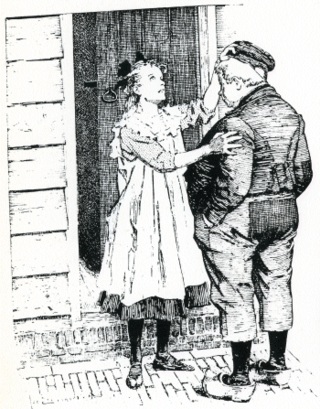Loading AI tools
Archetype of a cute, kind, unassuming, and honest woman or girl, often in a romantic story From Wikipedia, the free encyclopedia
The girl next door is a young female stock character who is often used in romantic stories. She is named so because she often lives next door to the protagonist or is a childhood friend. They start out with a mutual friendship that later often develops into romantic attraction.

A similar expression is "boy next door".
A girl-next-door character is often seen as natural and unpretentious. A trope that evokes nostalgia, it is associated with small towns and more local or even rural ways of life.[1] The girl next door is often portrayed as innocent.[1]
Actress and singer Doris Day, renowned for her rom-com film roles in the 1950s, is described as a pioneering embodiment of the girl-next-door image in film:[1] regarded as "Hollywood's girl next door".[2]
A common cliche is when a male protagonist is caught in a love triangle between two women, he will usually choose the "sweet, ordinary, and caring girl next door" he grew up with rather than a more well-off or beautiful woman with fewer morals.[3] Other times, this character ignores the hero for another male character, despite being the object of his affections.[4][better source needed]
The character Mary Ann Summers from the TV show Gilligan's Island (portrayed by Dawn Wells) had the girl next door allure, in contrast with the more glamorous character Ginger Grant (portrayed by Tina Louise).[5] Due to the popularity of the show and the two lead female characters, the question "Ginger or Mary Ann?" became shorthand for asking someone whether they preferred a girl-next-door type or a more glamorous type.[6]
Seamless Wikipedia browsing. On steroids.
Every time you click a link to Wikipedia, Wiktionary or Wikiquote in your browser's search results, it will show the modern Wikiwand interface.
Wikiwand extension is a five stars, simple, with minimum permission required to keep your browsing private, safe and transparent.